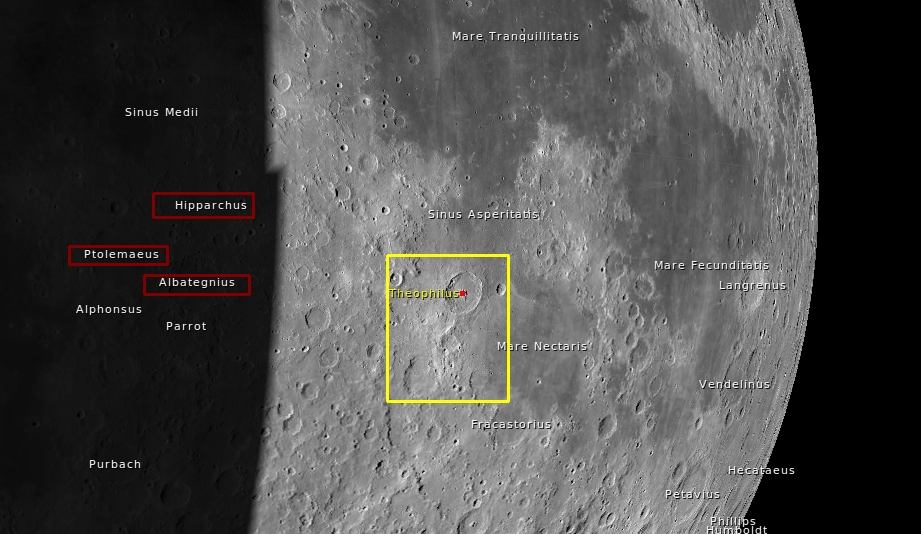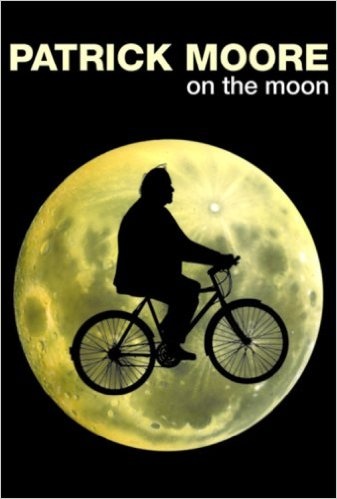
The Moon After Sunset approaching ‘first quarter’ was an enchanting sight. It was warm out, and reasonably dry and the ‘seeing’ was good enough so that the maria, craters and ridges showed crisp relief when viewed through a small telescope .
How do we start to identify some interesting ‘geological’ (seleneographical) features?
We need to know where the moon’s surface is receiving sunlight from our earthly perspective – the ‘daytime’ side of the moon:
This chart -courtesy of the RASC (Royal Astronomical Society of Canada)- shows us not only the shapes of the phases, but when and where the moon can be seen. A closer look using tools like Virtual Moon Atlas or detailed Moon maps can help us plan an observing session. When the moon is approaching first quarter, it is conveniently observable around 6pm in autumn.
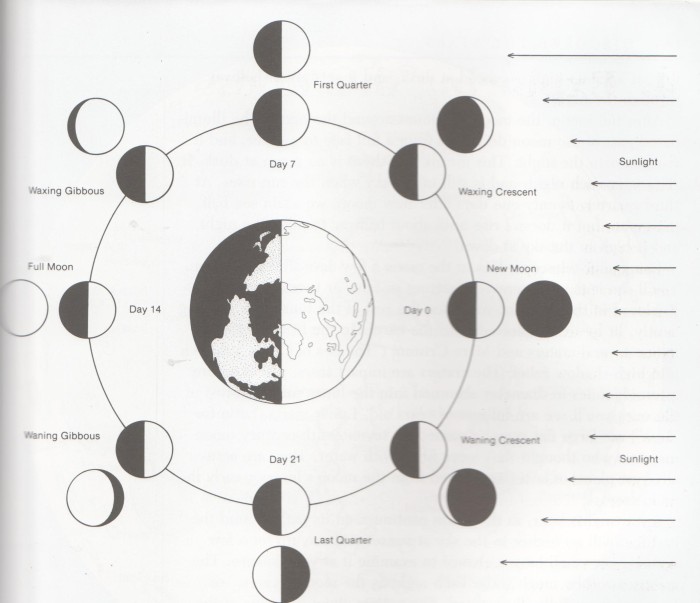 illustration – courtesy Richard Berry Discover the Stars (at Mississippi Mills Public Library)
illustration – courtesy Richard Berry Discover the Stars (at Mississippi Mills Public Library)
As the moon orbits the Earth (inside circle), we watch its face pass through phases: beginning with …
- New moon (Day 0) Moon in the daytime sky
- First quarter of Lunar Cycle (Day 7) when we see it half-lit at night
- Fully lit full moon (Day 14)
- Last quarter (Day 21) …
- and finally back to new moon (and deep sky observing)
- So we need to know what ‘day’ in the lunar cycle we are observing the moon to know which features are revealed in direct or slanting sunlight.
- We also need to know that in a reflector telescope South is up!

Identify Maria First:
To get a reference, we start traveling inward from the side closest to the setting sun (our western sky). Our naked eye observation shows the 4 maria Crisium, Fecundatatis, Tranquilitatis, and Serenitatis. Here we see the moon as we see it without optical flips. This is our reference which we turn around as necessary to match our view in the eyepiece!
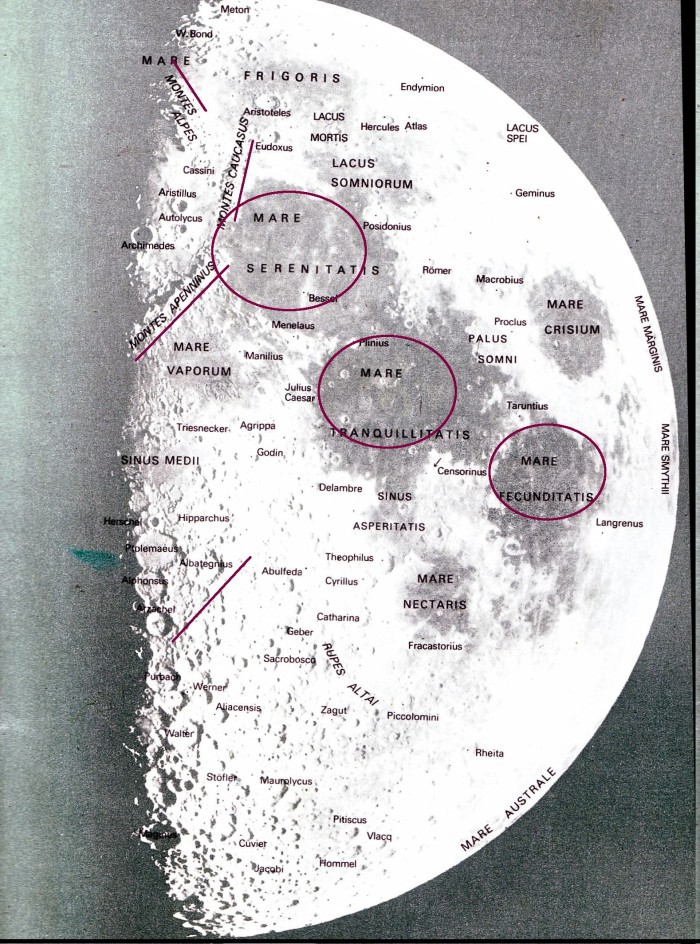
Identify Craters near the Maria:
At around Day 5, we can see the craters near Mare Nectaris, Theophilus, Cyrillus, and Catharina, then the Altai escarpment and the crater Piccolomini at the southern end.
Here’s a closer look at these features – not too different from what you can see at high magnification in a telescope – here on earth!
Web page courtesy: http://www.shoestringastronomy.com/lunar/L008.htm
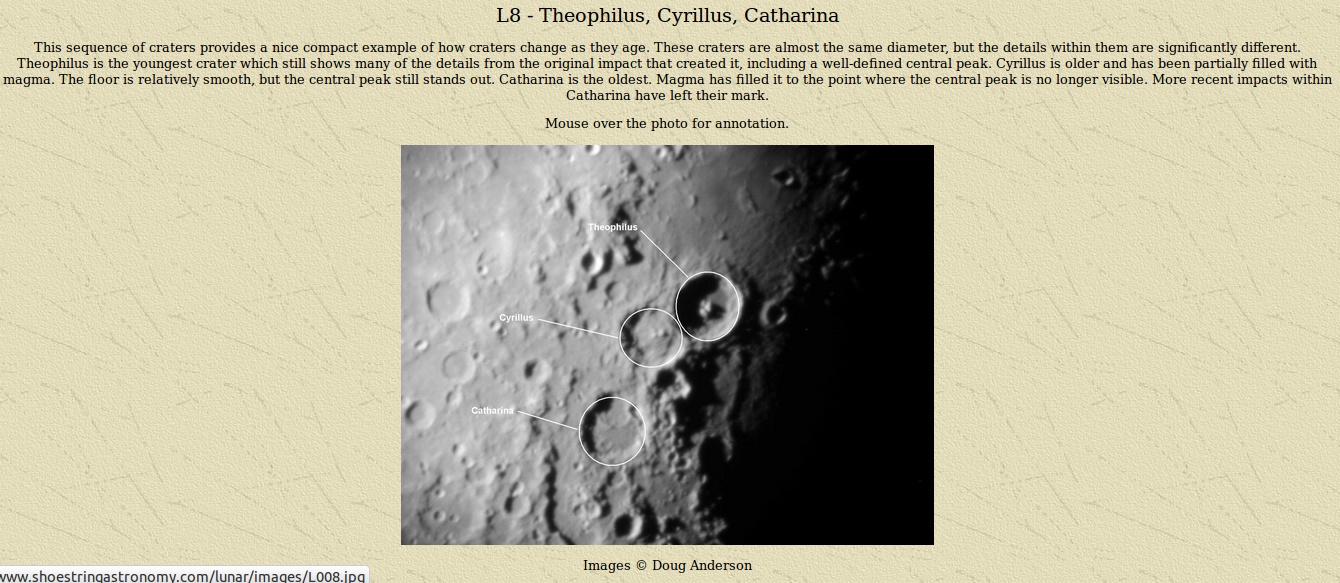 Here is some geological explanation of the meteoritic and volcanic events that shaped the lunar surface: Theophilus is the youngest crater… Cyrillus is older and partially filled in.
Here is some geological explanation of the meteoritic and volcanic events that shaped the lunar surface: Theophilus is the youngest crater… Cyrillus is older and partially filled in.
Other interesting features remain in shadow until the daytime of the terminator moves across these features . We need only wait for a couple of days before we see craters Hipparchus, Ptolamaeus, and Albategnius. So we can set our eyes on ‘New Hor-eye-zons’ each day… through the lunar cycle.
Patrick Moore wrote in a 1953 “Guide to the Moon”: On Lunar Landcapes
One advantage of ‘touring in imagination’ [whilst looking through the eyepiece] is that we can cover vast distances. It will be time enough to worry about transport when we travel to the moon in reality, not only in thought; and for the moment we are bound by no restrictions either in space or time” As for the extreme shadows we see, Moore notes: “Our first thought is that the darkness seems far more intense than anything in our earthly experience. … On the moon, there is no air to diffuse the light.”
Moon shine and moon shadow: these reveal wonderful horizons for the visual observer to explore! Read Patrick Moore on the Moon for an in-depth appreciation of what you are seeing. (It’s available in the Mississippi Mills Public Library.)




